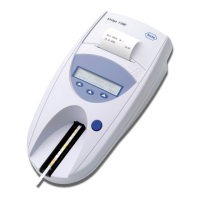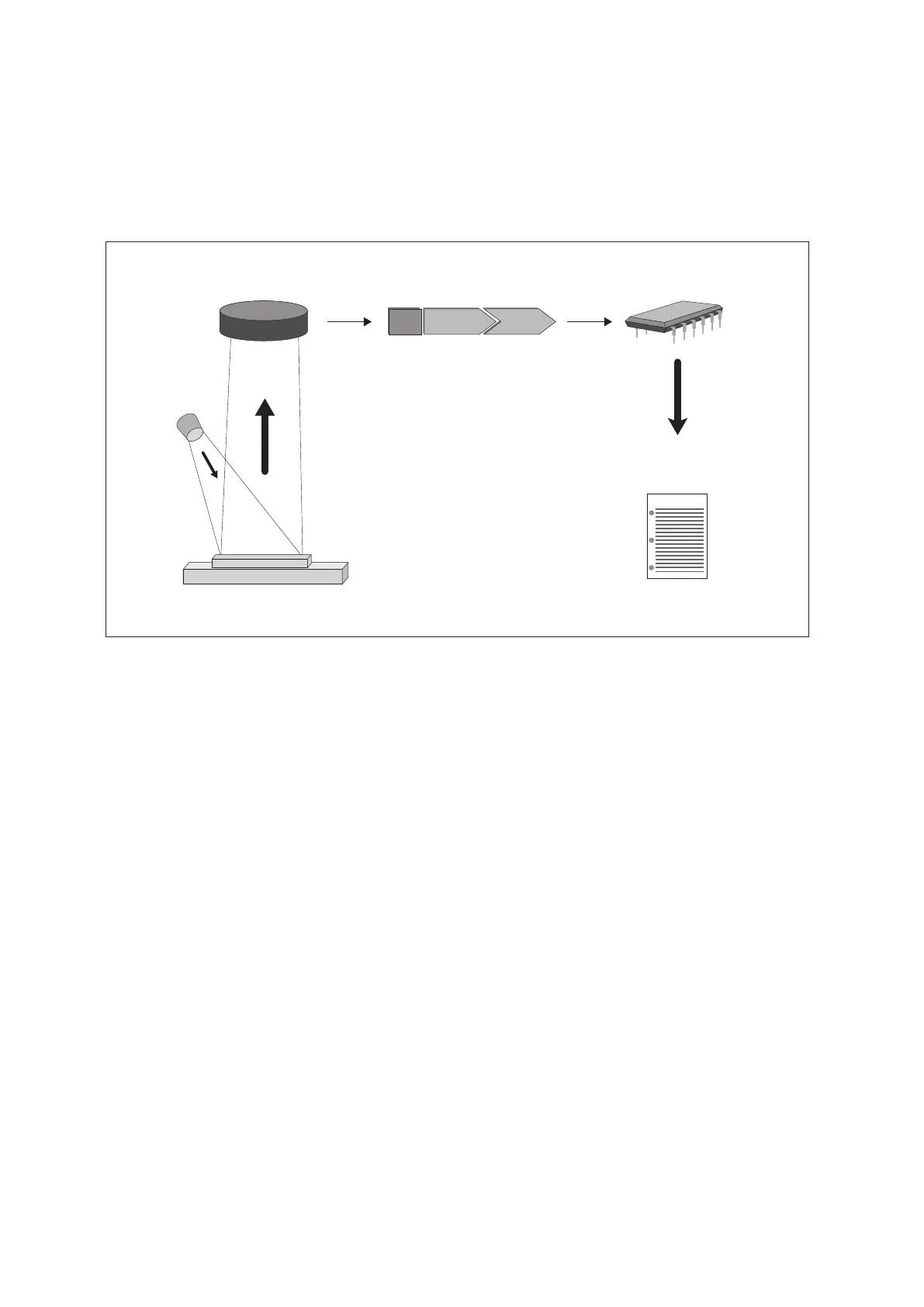Urisys - Operator’s Manual V.
. System Description
. Measuring Principle
The test strip is placed on a sliding test strip tray, and a stepping motor moves it under the reading head, which remains
stationary. The ana lyzer reads the reference pad, followed by each of the test pads on the strip.
The reading head contains LEDs that emit light at various wavelengths. Reading is done electro-optically, as follows:
1
3
2
4
5
6
The LED () emits light of a defined wavelength on to the surface of the test pad () at an optimum angle. The light hitting
the test zone is reflected more or less intensely depending on the color produced on the test pad, and is picked up by the
detector, a phototransistor () positioned directly above the test zone. The phototransistor sends an analogue electrical
signal to an A/D converter (), which changes it to digital form. The microprocessor () then converts this digital reading
to a relative reflectance value by referring it to a calibration standard.
Finally, the system compares the reflectance value with the defined range limits (reflectance values that are programmed
into the analyzer for each parameter) and outputs a semi-quantitative result ().
Each test pad is read photometrically after a lead (incubation) time of about – seconds. In strongly alkaline urine
samples, the Urisys system automatically corrects the result of the Specific Gravity test.

